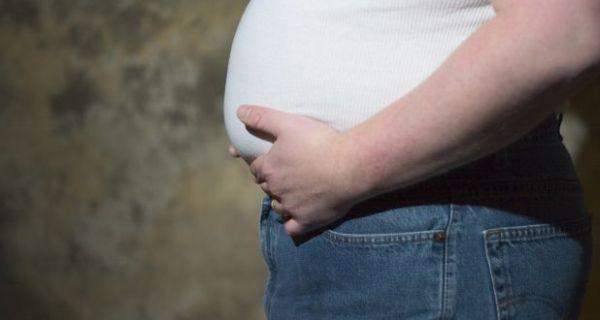Tried and True Weight-Loss Techniques
Seventy-one percent of Americans are overweight or obese. The problem has become so epidemic that Congress funded the Centers for Disease Control and Prevention to begin state nutrition education programs, and the federal government issued guidelines on the identification and treatment of overweight and obesity.
While there is still some debate as to whether overweight causes Type 2 diabetes or just raises the risk of developing it, more than 90% of people with Type 2 diabetes are overweight or obese. Overweight refers to an excess of body weight compared with standards set by the National Institutes of Health and the National Heart, Lung, and Blood Institute. The excess weight may come from muscle, bone, fat, or body water. Obesity refers specifically to having an abnormally high proportion of body fat.
Weight loss is almost always recommended to overweight individuals when they are diagnosed with diabetes, because losing just 5% to 10% of one’s body weight can help insulin to work better, resulting in lower blood glucose levels. In addition, being overweight is a known risk factor for developing other health problems such as sleep apnea, cardiovascular disease, and osteoarthritis; losing weight can reduce those risks.
The formula for weight loss is simple: Energy expenditure must exceed energy intake. The calories you burn in activity and in maintaining basic bodily functions must exceed the calories you consume as food. While the formula is simple, however, putting it into practice generally requires hard work.
Given how difficult it can be to lose weight and keep it off, it’s easy to be tempted by the latest diet book or television infomercial promising fast, easy weight loss if we eat (or don’t eat) certain foods or if we use a certain product. But while some of these methods or products may bring about short-term weight loss, few work over the long term, and some are even dangerously unhealthy. Indeed, when researchers examine which methods really bring about safe, permanent weight loss, the best way to lose weight still appears to be the tried-and-true recommendation to eat less and exercise more.
What works
Often, research into weight loss involves proposing a hypothesis and then testing it. For example, some scientists have designed pills they think will promote weight loss, then asked overweight volunteers to take them (after appropriate safety testing, of course). Others have designed diets for volunteers to follow, then observed whether the volunteers lost weight.
Recently, a group of scientists decided to approach the weight-loss puzzle from a different angle by studying the characteristics of people who had already successfully lost weight. Called the National Weight Control Registry, the study looked at the methods used by almost 800 people who had lost at least 30 pounds and had maintained that weight loss for over a year. In fact, the average person in the study lost over 60 pounds and kept off at least 30 pounds for an average of five and a half years. The study, now with over 4,000 member—participants, found that about 89% used both diet and exercise to lose and maintain their weight loss, while 10% did so through diet alone. Half of the members enrolled in commercial weight-loss programs or were under the formal guidance of a dietitian or psychologist, while the other half lost weight on their own.
Dietary regulation. The most common method participants reported using to regulate diet was to stop eating certain types of foods. The majority also had less fat in their diet than the recommended 30%. A third even got less than 20% of their calories from fat. Other relatively common dietary restrictions were limiting quantities of food and counting calories.
Exercise. Over 70% of the participants exercised enough each week to meet the American College of Sports Medicine’s (ACSM) minimum activity recommendation of burning 1,000 calories through activity per week. Over half also exceeded the ACSM’s 2000-calorie per week optimum activity level. Since studies have shown people tend to overestimate how much exercise they do, some of the impressive numbers reported may be somewhat inflated. However, increased physical activity was still a notable factor in participants’ weight loss.
Motivating factors. Almost 77% of the people in the study said their successful weight loss was triggered by certain events in their lives. The top three triggers were medical problems, emotional events, and lifestyle events such as an anniversary. Men were more likely to say they were losing weight in response to a medical event or simply for the sake of doing it, while women were more likely to cite an emotional event or a lifestyle event.
Since no single reason was cited by more than a third of the people, perhaps the simplest lesson to learn from these results is that it is important to find personally relevant reasons to lose weight. As you embark on the process of weight loss, take some time to figure out what your specific goals are. Remembering why you’re losing weight can help if you ever become discouraged along the way.
Genetic (un)certainties. Certain genetic conditions can predispose people to having problems controlling their weight, but don’t let fears of a family history of being overweight stop you from trying to lose weight. Many genetic predispositions are more risk factors than certainties. Over 70% of people in the Registry have at least one overweight parent.
Maintenance. Almost 75% of Registry members reported weighing themselves at least once a week. Some continued to count calories and/or fat grams while maintaining their weight loss. Maintaining healthy behaviors has to continue beyond the initial weight loss. Keeping active and eating healthier foods and amounts should be lifelong goals, not just stopgap measures to stave off pounds now and again.
Maintenance vs. losing. One of the study’s interesting findings is that maintaining weight loss is not necessarily harder than losing weight. While conventional wisdom says that keeping the weight off is more difficult, 42% of people in the study said weight maintenance was easier. Those who had kept weight off for longer reported spending less time and effort in maintaining weight loss through means such as keeping food records. It is thought that maintaining weight loss becomes easier because eating healthier and exercising have become second nature to and enjoyable parts of these people’s daily lives. People seeking to lose weight should not despair from visions of a hard road ahead since it may not materialize.
Despite yo-yo dieting. Even if you’ve lost and regained weight before, don’t assume you are doomed to fail at weight loss. Studies have shown that repeated weight-loss attempts do not decrease your chance for future success. Over 90% of people in the Weight Control Registry had tried to lose weight at least once before their successful attempt. The ingredients to their success seem to be a greater focus on exercise, a stricter approach to diet, and increased motivation, either from a greater commitment to losing weight or from identifying greater social and health reasons to change. If your efforts at weight loss have not been successful, you may need to try a different approach from those tried earlier, but don’t give up if a healthier lifestyle is important to you.
Avoiding stumbling blocks
Since the Weight Control Registry encompasses a number of people who have used and are using a variety of weight-loss plans, it’s tempting to generalize its results and say there’s no single, correct way to lose weight. But go back to the basic idea that calories expended in daily metabolism and activities must exceed calories consumed. Remember that the majority of participants in the study used both regular exercise and diet — a plan recommended by most experts — as parts of a successful regimen. A successful regimen requires effort and planning, and quick fixes and discouraging obstacles may prevent you from reaching your goal if you’re not looking out for them. Here are some tips to keep you on course:
Watch out for fads and gimmicks. Fad diets often rely on personal testimonials or word-of-mouth advertising and have little or no scientific evidence to back them up. Perhaps the worst of these diets suggest their approach is based on scientific research, when in fact the product or diet has only been tested on rats or on so few people that the results can’t be applied to the entire population. While some of these diets may someday be scientifically proven to have beneficial effects for humans, remember that diets that limit your intake to just one or two food groups do not meet your body’s need for essential nutrients. They may also be difficult to maintain if you become bored with the lack of variety.
While most people trying to lose weight are told to exercise and cut 500 to 1,000 calories a day from their diets, very-low-calorie diets (those that provide less than 1,000 to 1,200 calories a day) are not recommended for most people to try on their own. They tend to leave people hungry, do not have the best track record for long-term weight loss, and may not provide enough of your essential vitamins and minerals. Some experts say that hunger may be an issue for women who consume less than 1,200 calories a day and for men who consume less than 1,400 calories a day.
Use weight-loss pills properly. Prescription weight-loss drugs act by suppressing appetite or altering your metabolism, but they do not work for everyone and are not meant to be used as one’s sole means of weight loss. According to the National Heart, Lung, and Blood Institute’s Clinical Guidelines on obesity, weight-loss drugs should only be used as an adjunct to a reduced-calorie diet and exercise by people who are obese or who are overweight and have risk factors for other obesity-related diseases. The Guidelines also note that most of the weight-loss benefit from these drugs occurs in the first six months of use. Weight-loss drugs should never be used for cosmetic weight-loss purposes.
Increase fiber to feel full. Restricting your caloric intake has been known to cause cravings or bingeing, which may stem from not feeling full. However, you can reduce the number of calories you eat and still feel full by eating more fiber — in vegetables, fruits, whole grains, and dried beans. Most adults are advised to consume between 20 and 35 grams of fiber per day for good health. If your current diet falls short, increase your fiber intake gradually to avoid intestinal discomfort. (People who have gastropathy, or delayed stomach emptying, are not advised to increase their fiber intake).
Eating more fruits and vegetables may help satisfy your hunger in another way, as well. Studies show that people tend to eat the same weight of food every day, regardless of nutritional content. Fruits and vegetables tend to be higher in water and thus lower in calories than other foods of similar size or weight. So you can eat the same weight with fewer calories.
Pay attention to when and why. In addition to watching what you eat, you may need to look at when and why you eat. If you tend to snack while watching television, for example, a lot more food could pass your lips than you realize. If you deal with stress by eating, you could also be taking in a lot of extra calories.
Both of these problems can be addressed by paying more attention to how you feel and whether you are really hungry before you eat. To counter automatic eating while your mind is engaged with other things, try separating eating and other activities. Set aside time for meals. Serve yourself a portion of food rather than eating from a bag, cooking pan, or serving dish. If you feel full before you finish what’s on the plate, stop eating.
If your reaction to stress is to eat, it’s time to learn some new ways to deal with stress. Many people find it helpful to take a short break or go for a brisk walk when the tension builds up. Learning to meditate can also help you deal with stress over the long term. If you’re stumped on how to cope with stress or negative emotions, consider taking a stress-management class or meeting with a behavioral health professional such as a psychologist or social worker certified to do psychotherapy.
Decide how much you need to change. Depending on your personal preference, you may choose to make radical or gradual changes in your lifestyle. Gradual adjustments to things you already do may make changes more palatable and easier for you to make into habits. However, some people argue that a radical change to a healthy diet and exercise has rapid benefits and gives you encouragement to stay the course. Ultimately, the best approach to achieving and sustaining weight loss is the approach that works for you.
Some smaller changes might include using low-fat or skim milk instead of whole milk, buying leaner cuts of beef like round, or investigating alternatives to beef such as ground turkey, soy products, or even vegetarianism. To increase your fruit and vegetable intake, add strawberries or a banana to your cereal, put some spinach in your sandwiches, or consider replacing side dishes like French fries with a salad. Choose low-fat alternatives to spreads like cream cheese, or have the restaurant “hold the mayo.” If your diet is already balanced and nutritious as is, you may simply want to reduce the size of your food portions, particularly if you’re still eating as much as when you were in college. Despite what your mother may have taught you about eating everything on your plate, your body often knows its needs, so stop eating when you’re full, even if there’s still food left on your plate.
To get support for these changes from others in similar shoes, you may want to make time in your life to attend a support group. Some people find it helpful to attend a group such as Overeaters Anonymous or TOPS (Take Off Pounds Sensibly) to share thoughts and experiences with people who are also trying to lose weight.
Set helpful, not hindering, goals. While goals are important, unrealistic expectations can be potential obstacles to weight loss. Generally, health providers recommend aiming for a weight loss of 10% of your weight over six months and then maintaining that weight loss for another six months. Studies have shown that this recommendation is a realistic goal and that continuing to lose weight after the initial six months can be difficult. Weight may plateau despite maintenance of the new lifestyle because of changes in the body. After an initial weight loss, a new regimen of calorie reduction and increased physical activity needs to be formulated since your body has different requirements at its lower weight.
Even if losing 10% of your body weight is all you need and want, you must still continue your healthy eating and exercising habits indefinitely to maintain your new weight. Weight loss and maintenance is not a quick or temporary fix; it often entails a dramatic change in your lifestyle. Attempting or expecting a large loss of weight quickly can lead to disappointment, health problems, and a rebound in your weight.
Be flexible and forgiving. A good diet is governed by a set of guidelines rather than rigid lists of foods that you can or cannot eat. The days of the so-called “diabetic diet,” in which only certain sugars were restricted and meals had to be weighed, have gone, and so has the time of thinking about certain foods as inherently “good” or “bad.” It’s still a good idea (for everyone) to limit simple sugars, processed foods, and saturated fats in the diet, but you should not be overly discouraged or feel like a bad person for occasionally eating too much of something or eating a food you usually avoid.
Don’t knock nutrition
Although weight loss may be the objective, try to attain it in a healthful manner. Even as you reduce what you eat, carefully choose what you cut out of your diet, since eating a variety of foods helps ensure that you’re meeting your body’s need for essential nutrients. For example, if you lower your dairy intake to remove some calories and saturated fat from your diet, find another way to get enough calcium and vitamin D to prevent problems like osteoporosis. Keep in mind also that people who are overweight have been shown to have reduced levels of vitamin D in their blood. The reduced level of vitamin D could become a full-blown deficiency if all milk — one of the few foods that is enriched with vitamin D — is eliminated from the diet and nothing is done to find another source.
Cutting back on fat in the diet is a worthwhile goal for many. But while Americans have gradually reduced their intake of fat as a percentage of their daily diet, the number of obese and overweight Americans has climbed. Part of the increase could be due to the widespread misperception that just eating fat-free foods is healthier and that fat is bad. But many low-fat foods became low-fat when their fat was replaced with carbohydrate, which still has calories. By eating more of a fat-free food, you may actually ingest more calories than if you had eaten less of the original product.
Lower-fat diets may decrease one’s risk for cardiovascular disease, but fat reduction alone is not sufficient to produce a healthy lifestyle. Some fat is necessary in the diet — in fact, there is some evidence that monounsaturated fats may be health-promoting — and reduced saturated fat and cholesterol intake must be part of an overall strategy that includes reducing your caloric intake and exercising.
Just as cutting out one food or type of food isn’t usually the answer, adding too much of a type of food can also cause problems. A diet that is too high in carbohydrate could threaten your blood glucose control. But a high-protein diet may also be a high-saturated-fat diet or may require you to take supplements to make up for the nutrients lost from your decreased intake of vegetables and fruits. While you don’t need a health professional to approve of every menu, it would likely be helpful to consult with a dietitian familiar with the special needs of people with diabetes to give you some guidelines as a framework, at least when you first design your diet.
Get your z’s
Bleary eyes and falling asleep at your desk are innocuous signs that you didn’t get enough sleep the night before. But they’re only the tip of the iceberg if you chronically miss out on enough sleep. Even occasional sleep deprivation can lead to impaired memory and concentration, traffic and workplace accidents, and mood changes. Studies show that a lack of sleep also affects various hormones in the body, including increasing levels of the stress hormone cortisol and impairing the action of insulin. In some studies, not getting enough sleep led to short-term weight gain, which might lead to obesity and diabetes in the long-term.
Roughly 40% of Americans do not get the recommended 7–9 hours of sleep a night. People’s sleep needs are different, but if you tend to fall asleep during monotonous or boring periods of the day, have problems with memory and concentration, or find yourself irritable, perhaps you need more sleep. If you’re having trouble sleeping, stop napping after 4 PM, avoid caffeine in the afternoon and evening, start a relaxing prebedtime routine that includes getting into bed at the same time every night, examine and work to reduce some of the stress in your day, and assess if your sleep space is too bright or noisy. If you toss and turn for more than half an hour trying to get to sleep, get out of bed to read or relax until you become drowsy. If these simple tips are ineffective and insomnia is chronic, talk to your physician to see if he can offer additional advice, therapy options, or a referral to a sleep specialist.
Working exercise into your plan
From its diabetes-specific benefits of lowering blood glucose and helping insulin to work better to its more universal benefits of raising good cholesterol levels and reducing blood pressure, exercise is extremely beneficial. Some people with Type 2 diabetes are even able to manage their diabetes through a combination of diet and exercise alone. Regular exercise can also decrease your appetite, which can help you control your weight.
Exercise does not have to mean joining a gym. In fact, most of the National Weight Control Registry participants exercised at home or with a friend or group. Exercise can be as enjoyable as aerobic dancing, gardening, washing the car, swimming, or taking a walk. To help you get started with a regular exercise regimen, budget time for your exercise a week in advance so that you’re not scrambling to schedule time during the middle of a potentially hectic week. At the same time, have alternate times if your original plans go awry.
If you’re starting an exercise regimen after being inactive for a long time, start out easy. Consider adding a few more physical activities to your day such as parking a little further from your office to take advantage of the walk, picking up your lunch rather than having it delivered, or simply walking around in your yard or around the block once or twice a day. If you’re ready to add some structured exercise, begin with just 10 to 15 minutes of a low-to-moderate-intensity activity like walking, three or four times a week. Gradually increase the amount and intensity of your activities.
The ACSM recommends that people with diabetes gradually work up to 30 minutes of exercise a day – possibly broken into three 10-minute sessions – at least three nonconsecutive days a week, and preferably most days of the week. Exercise more often or for longer periods of time if you are willing and able, but remember not to overdo it. A simple rule of thumb is that you may be overdoing it if you do not have the breath to carry on a conversation as you exercise. Experiencing a loss of strength or feeling burned out or fatigued are also signs that you may be overdoing the exercise.
Resistance training. While aerobic activity is a good base for exercise, the ACSM advises adding some light resistance or weight training twice a week to add variety and increase your calorie-burning muscle mass. High-intensity resistance training with heavy weights is not recommended for some people with diabetes, but light weights with more repetitions may be fine. If you have retinopathy, however, check with your eye doctor before starting any resistance training.
To prevent accidents and injury, learn how to do resistance exercises properly under the guidance of a certified trainer, or ask your physician to refer you to an exercise physiologist. In addition to helping with diabetes control, resistance exercise may be particularly effective at staving off osteoporosis.
Exercise safety. While recommendations from the Surgeon General and various health organizations say everyone can benefit from some exercise, make sure you exercise safely by consulting with your physician before beginning an exercise regimen. Your doctor should give you a complete physical to assess your risk for diabetes-related complications and may prescribe a stress test and a dilated eye exam. People with high blood pressure may be advised to avoid exercises such as lifting that raise blood pressure, while people with nerve damage may be advised to do more swimming or biking than running.
Before each exercise session, be sure to check your blood glucose level. If it is below 100 mg/dl, consume 15 grams of carbohydrate to raise your blood glucose level before beginning your workout to prevent hypoglycemia during the workout. High blood glucose before exercise merits some caution, as well. While exercise is said to have an insulin-like effect (in that it generally lowers blood glucose), if there’s not enough actual insulin in the body, blood glucose levels may rise with exercise. If your blood glucose is above 240 mg/dl, start exercising and check your blood glucose after 15 minutes. If the level has gone up, stop your activity and drink some water; speak with your diabetes educator to learn what to do in this situation since you may need to take insulin, as well. If your blood glucose level has decreased, feel free to continue.
If you have Type 1 diabetes and your blood glucose level is above 300 mg/dl, drink water and test your urine or blood for ketones. If ketones are present, there’s a risk of ketoacidosis and coma, so call your physician or diabetes educator for advice on how to proceed.
If you’re planning to exercise for over half an hour, plan on checking your blood glucose at half-hour intervals. Carry some glucose tablets or other carbohydrate to treat hypoglycemia. Depending on how strenuous your workout is, blood glucose levels can be affected up to 24 hours after exercise. Plan on checking your blood sugar several times after exercise until you learn how the exercise affects your body and your blood glucose levels.
Here are a few more tips to make exercise enjoyable:
• Warm up your muscles before each exercise session by doing your activity at a slower-than-normal pace for 5 or 10 minutes.
• Cool down after exercise by slowing your activity or by walking at a moderate pace for about 5 minutes.
• Include stretching in your exercise plan. Good times to stretch are after your warm-up or after your cool-down.
• Unless you’re exercising for more than an hour, water is as good as or better than sports drinks or fruit juices to quench your thirst and prevent dehydration.
• Be alert for increased thirst, weakness, confusion, or other signs of dehydration if the weather is hot.
• Wear the proper attire: well-fitted shoes that are not constricting, layered clothing if exercising in the cold, and sunscreen and a hat if you exercise outdoors.
• Examine your feet for sores, cuts, or redness before and after exercise, especially if you have or are developing signs of nerve damage.
• Listen to your body. Be prepared to take a break or seek appropriate medical attention if you experience dizziness, lightheadedness, chest pain, or extreme shortness of breath.
Rethinking weight loss
Weight loss does not exist in a vacuum. Rather than seeking to shoehorn a new, more healthful regimen into your life, seek to make it an integral part of your life. Weight loss alone can result in improvements in quality of life, energy, and mobility, but the more important realization is that the overall lifestyle that promotes weight loss and weight maintenance has tremendous physical, mental, and emotional benefits. There is no universal magic bullet for weight loss since everyone will prefer different exercises and food combinations, but perhaps the National Weight Control Registry has helped to dispel some of the mystery surrounding successful weight loss.
-
How this girl lost 23 kg in 8 months WITHOUT hitting the gym
Now t
-
Dance away the weight with Zumba!
-
What is BMI? How do I calculate it? All your questions about BMI answered
You m
-
7 popular fad diets you should NOT follow (and why)
-
How to lose weight by skipping or jumping rope
-
Why drinking alcohol is bad for your weight loss regime
- DON'T MISS
- Weight loss Tip 135: Get up from your chair every hour
- 13 ways to boost your metabolism and lose weight easily
- Sample weight loss diet plan by an expert dietician
- What is a metabolicdiet?
- How to lose weight by running
- Almond milk — Best milk for weight loss
- What is greencoffee bean extract?
- What exercises can I do in the gym for weight loss? (Fitness query of the day)
- Stick to your workout routine with these easy tips
- 4 types of chips to avoid and 3 types you should eat when trying to lose weight




